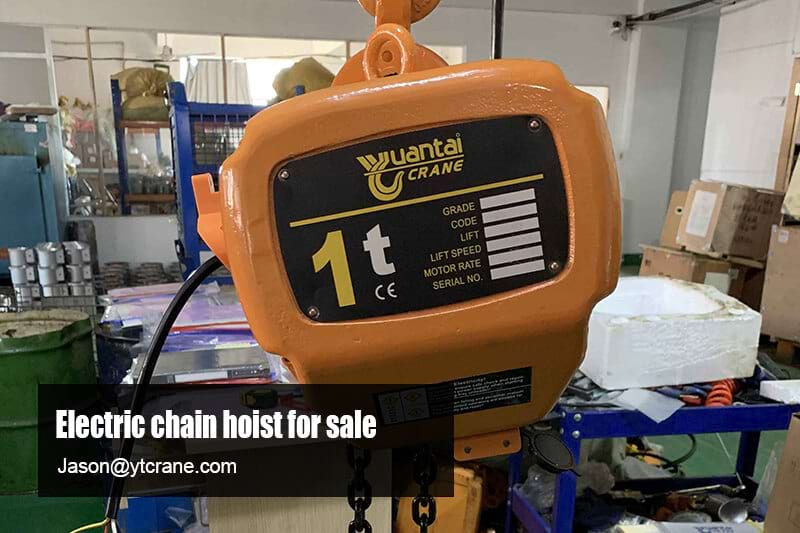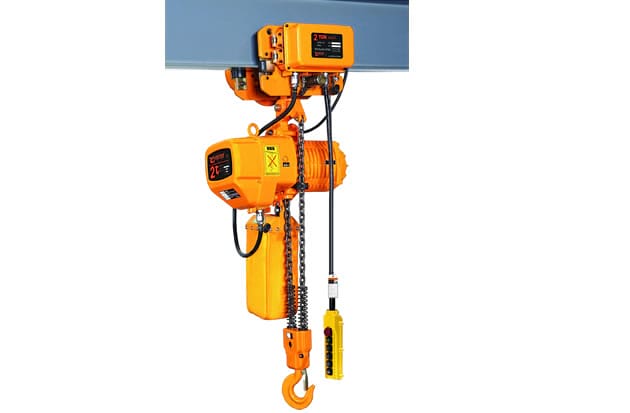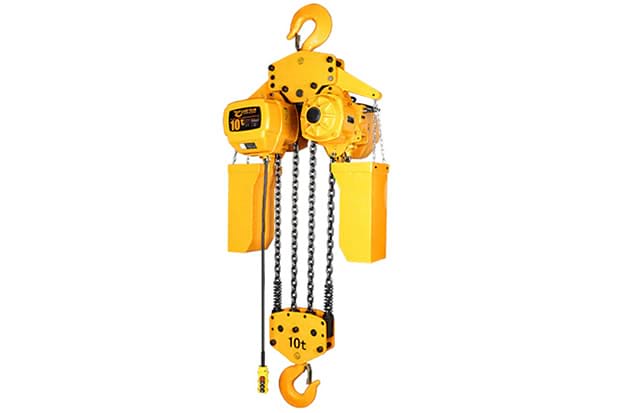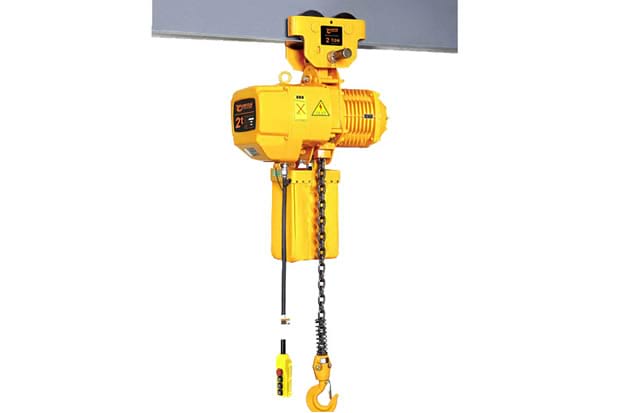Electric chain hoist, as a light and small lifting equipment, has many advantages such as small size, simple operation and convenient operation, and has been favored by the majority of users. However, even if users operate strictly in accordance with the operating standards and operating environment requirements of the electric chain hoist, they will inevitably encounter various failures during use. Today we will tell you what to do if you suddenly stop working while using the electric hoist, and what may be the cause.
First consider the poor contact of the sliding contact line. When the electric chain hoist passes through the contact line interface, the electric chain hoist often stops suddenly. In severe cases, the motor will be burnt due to lack of phase. Due to factors such as the quality of the trolley wire and the field environment, the plastic shell of the trolley wire is fragile and deformed severely during transportation and installation, which increases the installation difficulty of the trolley wire. The slip wire and the slip wire interface are prone to misalignment, resulting in poor contact and lack of phase or power failure when the current collector passes through the interface, and the electric chain hoist suddenly stops.
The second consideration is the current collector, and the built-in spring supports the sliding carbon brush to contact the sliding wire. Environmental factors such as rainy coastal areas and high air humidity make the springs easy to rust and fail, resulting in poor contact between the carbon brushes and the sliding wires. However, there is a chamfer in the position of the carbon brush contact. When the carbon brush enters the uneven sliding line interface, the electric hoist has a small inertia, and the carbon brush contact cannot successfully pass through the interface, resulting in poor contact of a certain phase of the current collector.
Then consider the use of electric hoists. The electric chain hoist is not used in a standard way. All kinds of skewed and oblique crane electric hoists are inclined due to the force, which drives the current collector to deviate from the normal track, resulting in poor contact between the current collector and the sliding line, lack of phase or open circuit, and the electric hoist suddenly stops. , The motor is often burnt due to lack of phase. Overload Overload operation is also one of the reasons that the electric chain hoist does not work.
In order to eliminate the bad condition of the current collector and the sliding contact line, we first strengthen the position of the sliding line interface to ensure that the interface is as flat as possible; secondly, replace the rusty spring of the current collector, and at the same time polish the carbon brush contacts to make the contacts more smooth. Eliminate the gap due to the unevenness of the sliding wire interface, and ensure that the contact can effectively contact the sliding wire copper rail. Strengthen the technical clarification of the electric hoist users, and use the electric hoist in a correct and standardized way.




Get Free Quotation